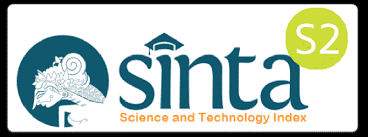Evaluation and Implementation of Nutrition Surveillance System in Bukittinggi
DOI:
https://doi.org/10.35730/jk.v14i2.1066Abstract
Background: Nutritional surveillance monitors nutritional status to inform policy and programme decisions to improve community nutrition, including stunting. Chronic malnutrition and recurring illnesses cause stunting, which is when a child's length or height falls below the health minister's guidelines. Challenges include: not all Posyandu are active/covered low, not all targets have been input into the EPPGBM application (Toddlers and Pregnant Women), the use of the EPPGBM application in Community Health Centres has not been optimal, not all health workers and cadres have received height measurement training, coordination at each level, the monitoring system, and supervision to ensure height measurement quality. Due to its impact on the newborn, the first 1,000 days are critical. Permanent and lasting damage. Providing nutrition assistance at community health centre with surveillance can avoid stunting.
Methods: The employed approach is participatory in nature, wherein partners are engaged to actively participate in various activities, while being supported by a dedicated staff that serves as a valuable resource and facilitator. The data analysis conducted for training purposes is to facilitate the implementation of the stunting surveillance programme, which is anticipated to encompass many sectors. This programme will primarily focus on monitoring and reporting nutrition-related activities, with a particular emphasis on stunting routines.References
Mohammad Rachmat. Surveylance Gizi.Pusat Pendidikan Sumber Manusia Kesehatan Badan Pengembangan dan Pemberdayaan Sumber Daya Manusia Kesehatan Edisis Tahun 2017;1(6) 6-8.
Peraturan Menteri Kesehatan Republik Indonesia Nomor 45 tahun 2014 Tentang Penyelenggaraan Surveilans Kesehatan, (2014).
Notoadmojo S. Metodologi Penelitian Kesehatan, Jakarta: Rineka Cipta. 2012.
Kementrian Kesehatan RI. Undang-Undang Republik Indonesia Nomor 36 Tahun 2009 Tentang Kesehatan.
Kemenkes RI. Peraturan Menteri Kesehatan RI nomor 13 tahun 2022 tentang Perubahan atas peraturan menteri kesehatan nomor 21 tahun 2020 tentang rencana strategis Kementerian Kesehatan tahun 2020-2024. 2022;(3):592.
Rahayu A, Yulidasari F, Putri AO, Anggraini L. Study Guide - Stunting dan Upaya Pencegahannya. Yogyakarta: CV Mine; 2018.
Hanindita M. Mommyclopedia: Nutrisi di 1000 Hari Pertama Kehidupan Anak. Jakarta: PT Gramedia Pustaka Utama; 2018. 8 p.
Kurniati PT, Sunarti S. Stunting dan Pencegahannya. Jawa Tengah: Lakeisha; 2020.
Scaling Up Nutrition. Country Progress in scaling up nutrition. 2013.
General Assembly. United Nations Transforming Our World: The 2030 Agenda for Sustainable Development. NY, USA: Division for Sustainable Development Goals: New York; 2015.
UNICEF, WHO, The World Bank. Levels and trends in child malnutrition UNICEF / WHO / World Bank Group Joint Child Malnutrition Estimates Key findings of the 2021 edition. World Health Organization. Geneva: World Health Organization; 2021. 1-32 p.
UNICEF, WHO, The World Bank. Levels and trends in child malnutrition: key findings of the 2019 edition of the Joint Child Malnutrition Estimates. Geneva: World Health Organization; 2020.
Sentongo P, Ssentongo AE, Ba DM, Ericson JE, Na M, Gao X, et al. Global, regional and national epidemiology and prevalence of child stunting, wasting and underweight in low- and middle-income countries, 2006–2018. Sci Rep. 2021;11(1):1–12.
Riset Kesehatan Dasar 2018. Jakarta: Badan Penelitian dan Pengembangan Kesehatan; 2018.
Kemenkes RI. Situasi Balita Pendek (Stunting) di Indonesia. Buletin Jendela Data dan Informasi Kesehatan. Jakarta: Kementerian Kesehatan RI; 2018.
WHO. Global nutrition targets 2025: Stunting policy brief. Geneva: World Health Organization; 2014.
Kemenkes RI. Buku Saku Hasil Survei Status Gizi Indonesia (SSGI) 2022. Jakarta: Kementerian Kesehatan RI; 2022.
Ulfah, B. (2019). Faktor-Faktor Yang Berhubungan Dengan Kejadian Status Stunting Pada Balita Usia 24-59 Bulan Di Wilayah Kerja Puskesmas Rawat Inap Cempaka Banjarbaru Tahun 2018. Siklus: Journal Research Midwifery Politeknik Tegal, 8(2), 122–129. https://doi.org/10.30591/siklus.v8i2.1356
Illahi, K. R. (2017). Hubungan Pendapatan Keluarga, Berat Lahir Dan Panjang Lahir Dengan Kejadian Stunting Balita 24-59 Bulan Di Bangkalan. Manajemen Kesehatan, 3(1), 1–14.
Permatasari, D. F., & Sumarmi, S. (2018). Differences of Born Body Length, History of Infectious Diseases, and Development between Stunting and Non-Stunting Toddlers. Jurnal Berkala Epidemiologi, 6(2), 182. https://doi.org/10.20473/jbe.v6i22018.182-191
Rahayu, R. M., Pamungkasari, E. P., & Wekadigunawan, C. (2018). The Biopsychosocial Determinants of Stunting and Wasting in Children Aged 12-48 Months. Journal of Maternal and Child Health, 03(02), 105–118. https://doi.org/10.26911/thejmch.2018.03.02.03
Kemenkes RI. (2018a). Data dan Informasi profil Kesehatan Indonesia 2018.
Berhe K, Seid O, Gebremariam Y, Berhe A, Etsay N. Risk factors of stunting (chronic undernutrition) of children aged 6 to 24 months in Mekelle City, Tigray Region, North Ethiopia: An unmatched case-control study. PLoS One. 2019;14(6):1–11
Uliyanti, Tamtomo, D. ., & Anantanyu, S. (2017). Faktor Yang Berhubungan Dengan Kejadian Stunting Pada Balita Usia 24-59 Tahun. Jurnal Vokasi Kesehatan, 3(2), 1–11.
Simanjuntak, B. Y., Haya, M., Suryani, D., Khomsan, A., & Ahmad, C. A. (2019). Maternal knowledge, attitude, and practices about traditional food feeding with stunting and wasting of toddlers in farmer families. Kesmas, 14(2), 58–64. https://doi.org/10.21109/kesmas.v14i2.2712




